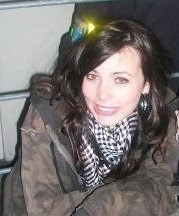 Characters and Narrative
Characters and NarrativeAs its origins are found in the early 1920 detective novels, often film noir’s characters are police or investigators. Such as Sam Spade played by Humphrey Bogart in The Maltese Falcon in 1941 and Philip Marlowe played again by Humphrey Bogart in The Big Sleep in 1946. Both these men are typical of noir protagonists – amoral rogues who play by their own rules, pessimistic, ‘hardboiled’ and troubled, who seem to be very attractive to the opposite sex. He is always on a quest and gets tested, interrogated, attacked and persecuted along the way. Sometimes a voice-over is used like a confessional narration who is telling the story out of a need to confess his conscience. The narration makes it much more personal for the audience. The women that are often so attracted to these protagonists aren’t typically any more moral, if anything rather being amoral they are immoral, which is exactly why they are referred to as femme fatales. Frequently playing the antagonist, these dangerous temptresses use their feminine wiles to seduce the main character which often leads to his demise. The femme fatale helps to add to the visuals of the film noir; she is always glamorous with long flowing hair and red lips and nails. Archetypal femme fatales include Phyllis Dietrichson, played by Barbara Stanwyck in Double Indemnity, 1944, and Adrian Lyne played by Glenn Close in Fatal Attraction, 1987. The only other type of woman to appear in film noir is the opposite of the femme fatale, the domestic woman, a wife or girlfriend associated with home, nurturing, rehabilitation and servitude. This highlights the ideology of film noir.
Ideology and ThemesRegarding that film noir had its heyday in and around the Second World War and following through to the Cold War.; it helps to understand the ideology of the genre. The themes of many noirs are much like the life for people living during the Second World War; dark, sombre, bleak and depressing. And the characters, a product of their environment, echo real fears and dilemmas of the time; the loss of moral certainty, faith and hope. Post World War Two saw men returning home fragmented and alienated and hardened this too is shown through the genre’s protagonists. During the Cold War era, America suspected many of its Hollywood directors as being communist sympathisers. This has been reflected in many film noirs, as prominent themes include paranoia, distrust and suspicion. The women too show an ideology close to film noir’s heart. In an age where women were finally being liberated, film noir mirrored many feelings on this from the male dominated film industry, that this wasn’t necessarily a good thing hence the outspoken and strong willed women within noir are portrayed as bad, dangerous and branded as femme fatales, contrasted by their wholesome domestic counterparts who were portrayed as good and loyal.
Setting and IconographyFilm noir can be set within either the external or internal world; it doesn’t matter as long as it’s bleak and dark. The external world appears most often in noirs. As film noir got many of its inspiration from detective novels, it is not surprising that many are set in large corrupt cities filled to the brim with villains, utilising its mean rain-drenched backstreets, grimy apartments, casinos and its dark underworld. Favourite settings include nightclubs, basements, backrooms and police stations. As seen in Christopher Nolan’s 2008 neo-noir The Dark Knight. Fairgrounds and carnivals too are synonymous with film noir as in German expressionism it is said to represent madness; therefore these settings can be used in both the external and internal worlds, much like Robert Wiene’s The Cabinet of Dr. Caligari, released in the U.S in 1921. The internal world is set in the protagonist’s mind either as a nightmare, flashback or imagination. This world is confusing, sinister and can be violent. Along with the settings themselves; flashing neon signs, alcohol, voice recorders, newspapers, phones and phone boxes have all become classic icons of film noir.
Visual Style and Cinematography The visual style is one of the most striking things about film noir. It is a hard look with stark chiaroscuro lighting and often lots of references to tabloid newspapers. The interiors are claustrophobic and dark, made apparent by the restricted camera frames, many night scenes, deep focus, close up and extreme close up camera shots and low key lighting. Frequently elements are exaggerated and distorted making them appear nightmarish and grotesque, such as faces distorted through objects or shadows, quick jump cuts and most commonly the Dutch Tilt is used to create this effect as it helps to throw the audience off centre.
Labels: Film Noir Research







